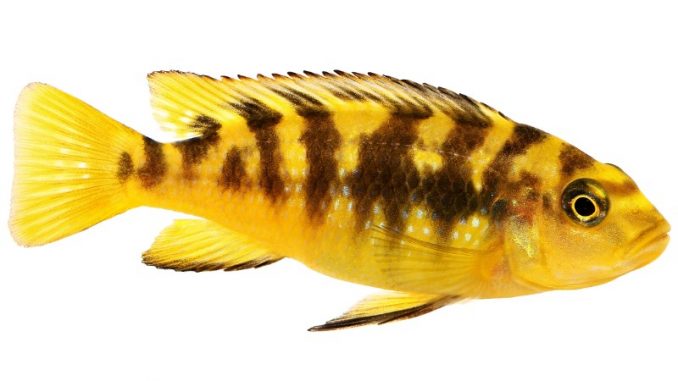
The bumblebee cichlid is a freshwater fish of the cichlid family. It is also related to other common aquarium fish, such as angelfish and convict cichlids.
Bumblebee cichlids are popular due to their unique appearance. They are attractive, display interesting color combinations, and have unique yellow and black stripes running down their bodies, which is why they are called bumblebee cichlids.
Bumblebee cichlids have aggressive temperaments. They are territorial and fight other fish in overcrowded aquariums, so beginner aquarists often struggle to manage them in community tanks.
TABLE OF CONTENTS
Bumblebee Cichlid Facts and Overview
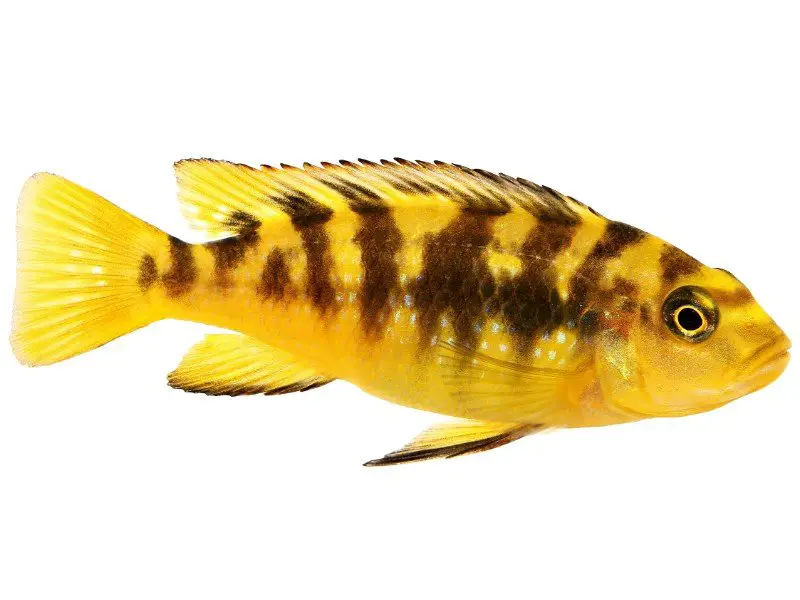
Bumblebee cichlids are referred to by a number of different names. These include bumblebee mouthbrooders and hornet cichlids, but their scientific name is Pseudotropheus crabro.
Bumblebee cichlids are native to Africa and are endemic to Lake Malawi, which is the only place in the world where natural populations are found.
Luckily, bumblebee cichlids are sold worldwide for the fishkeeping trade in pet stores and online. African cichlids from Lake Malawi are also sometimes called mbuna, which causes confusion in pet stores.
Bumblebee cichlids are a popular and common fish, and most pet stores stock them, so finding bumblebee cichlids for sale is easy. Pet stores sell these fish for around $10 each, but make sure the fish are healthy before purchase. You should watch the bumblebee cichlids for a little while and look for signs of disease or injury.
A healthy bumblebee cichlid will live for ten years or more in the right aquarium setup.
Appearance & Behavior
The name bumblebee cichlid sums up the fish’s appearance well. This fish looks like a bumblebee because of its thick vertical black and yellow stripes running from its mouth to its tail. The fish usually has a yellow head, body, and fins. However, their color can vary immensely.
Bumblebee cichlids vary in color due to genetic and environmental differences. For example, pale fish are usually stressed or sick. Color changes due to sickness or stress are temporary and will return to normal once the fish recovers.
Bumblebee cichlids have small fins. Their tail fins and dorsal fins are short, with slight indentations. These fish grow up to seven inches long. On their head is a pair of large black eyes and a largemouth. Their mouth is important for feeding and breeding as these fish are mouthbrooders.
An interesting feature of cichlids is their two sets of teeth. They have one set in their mouths and a separate set in their throat (a pharyngeal jaw). These help to break tough foods into even smaller pieces. Bumblebee cichlids eat small crustaceans in the wild, and a pharyngeal jaw enables them to crush hard shells.
Males are large and darker in color than females. Males will darken to almost black during mating or when they feel threatened. Females have prominent egg spots on their anal fins, which is another way to sex the species.
Typical Behavior
Bumblebee cichlids are aggressive and territorial. They will violently defend their area of the tank if the fish feel like their territory is threatened.
Males are the most aggressive and will obsess over females and fight other males for the right to breed. Because of this, you should separate males to reduce fighting. There should be three females for every male fish to prevent the males from harassing the females.
Bumblebee cichlids are aggressive but can still live in community tanks. Ensure tank mates are also native to Lake Malawi and have semi-aggressive temperaments. Appropriate tank conditions will also prevent fighting and fin nipping.
Onlookers will notice bumblebee cichlids swimming around the middle and lower section of the tank. These fish are slow swimmers and extremely confident.
Bumblebee Cichlid Care

Bumblebee cichlids are easy to care for with the right training and aquarium conditions. These fish are aggressive, so prior fishkeeping experience is preferable but not essential. Cichlids should live in a tank that mimics their natural environment for the fish to thrive.
Maintaining a clean aquarium is vital, as is performing regular water changes. Bumblebee cichlids are accustomed to clean fresh water in the wild, which means the fish are particularly sensitive to unsanitary conditions.
Bumblebee cichlids can contract common aquarium diseases and infections. However, as long as their tanks are clean, the fish will stay healthy and free of infections. Some diseases are unavoidable but can be treated with antibiotics or by performing more frequent water changes.
Habitat & Tank Requirements
Research a bumblebee cichlid’s natural environment before designing your aquarium since you need to recreate their habitat in your tank. If conditions in a tank are too different from what the fish are used to, they will be become ill and die.
Bumblebee cichlids are endemic to Lake Malawi in Africa. This is one of the largest lakes in Africa, and it is situated between Malawi, Tanzania, and Mozambique. The lake is notable for its large diversity of cichlids (mbuna) that have evolved through rapid speciation.
Bumblebee cichlids live in deepwater rocky areas of the Lake. They have plenty of access to caves and shelter, which should be an important aspect of the aquarium you curate for them.
Caves are used as territory. Each fish claims a cave as its own and will return to the cave regularly. If a strange fish enters a bumblebee cichlid’s cave, they will fight to defend their area.
Many species live in Lake Malawi, including other popular ornamental fish. They tend to have aggressive personalities, much like bumblebee cichlids. It is common for hobbyists only to keep fellow mbunas with their bumblebee cichlids. This is another way to replicate the Lake Malawi habitat more closely.
There are strong water currents in the bumblebee cichlid’s natural habitat. The water itself is hard, warm, and alkaline, although these conditions vary throughout the year as the rainfall changes. Bumblebee cichlids require consistent conditions in captivity to thrive.
Tank Conditions
After researching a bumblebee cichlid’s natural habitat, the next step is to plan how to mimic it at home. This is simple to do for Lake Malawi.
Some key points to consider include:
Size – You should increase the tank size by 50-gallons for every additional bumblebee cichlid.
Substrate – Use a sandy substrate to layer the bottom of the aquarium. Add rocks to create a series of caves. This rocky structure should extend high into the water.
pH level – The water should be hard with a pH of 7.8-8.6.
Temperature – Keep the water temperature between 76°F and 82°F.
Filters and bubblers – Bumblebee cichlids enjoy strong water movements. Use a powerful filter, an air pump, or a water pump to create the right ambiance.
Decorations –You should spread caves around the tank to create territories. Doing this reduces conflict in the tank. Use aquarium glue to hold rocks and heavy structures together.
Water Type – Adding a pinch of aquarium salt to the water will increase salinity levels.
Once these conditions have been met, they must be maintained. Regular cleaning of the water, substrate, and other surfaces is required to do this.
Tank Mates
Ideal tank mates for bumblebee cichlids are fellow Lake Malawi residents. Golden mbuna, Melanochromis chipokae, and Pseudotropheus cyaneorhabdos are great choices as they have similar care needs and aggression levels.
Avoid tank mates with similar color patterns to bumblebee cichlids. Bumblebee cichlids will feel threatened by fish with similar patterns to them. Invertebrates are also unsuitable tankmates for bumblebee cichlids as they are too small and will be eaten.
Bumblebee cichlids can live in community tanks or on their own. Males will fight with one another, so ensure there are plenty of females and only one male in their tank. Creating a species-only tank reduces compatibility issues.
Disease
Bumblebee cichlids are hardy and generally free of diseases and infections. They don’t have species-specific diseases, but they can develop common freshwater diseases.
Ich is a common freshwater tank disease. This is an ectoparasite that causes white spots to appear across a fish’s body.
Swim bladder disease is another common bumblebee cichlid problem. It affects the fish’s buoyancy, causing the fish to stay at the surface of the water. Overfeeding is the most common cause of swim bladder disease.
Malawi bloat is another common freshwater fish disease. This condition will make the fish sink to the substrate.
Diseases and infections are easy to treat. Pet stores often have solutions for specific diseases. Sick fish should move to hospital tanks to prevent cross-contamination, and new fish must quarantine for three weeks before moving to community tanks.
Pathogens thrive in poor water conditions. The best way to avoid disease is to keep the aquarium clean. Perform weekly partial water changes, keep algae levels low, and feed the fish a nutritious diet to prevent disease.
Diet & Feeding
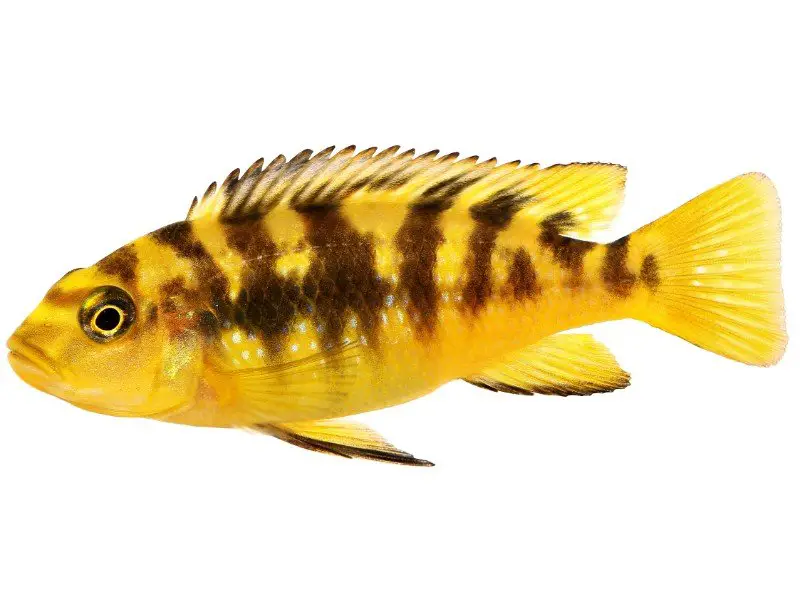
Bumblebee cichlids eat insect larvae, small crustaceans, and fish eggs in the wild. Captive-bred bumblebee cichlids should eat plants and fish food flakes.
The bumblebee cichlid is a feeder fish, which means it feeds on parasites in the water. Aquarists often pair a large catfish with a bumblebee cichlid in an aquarium so that the cichlid can eat parasites attached to the catfish.
Dried fish food flakes and pellets are convenient food for bumblebee cichlids, and live and frozen mosquito larvae, brine shrimp, and mysis shrimp are great snacks. You should feed your cichlids a mixture of dry and live food.
Bumblebee cichlids will learn their feeding routine. They become more active at feeding times because they expect food. Feed them 2-3 times a day. Only give them an amount they can finish within a couple of minutes to prevent overfeeding.
Breeding
Breeding bumblebee cichlids in captivity is possible. Keep the tank clean and feed the fish a highly nutritious diet to encourage breeding.
Keep one male with multiple females in a breeding tank to avoid injury and be careful not to overcrowd the tank. The male will court the female and circle her to initiate breeding.
Bumblebee cichlids are mouthbrooders, which means females will deposit their eggs for the male to fertilize. Once the eggs are fertilized, the females pick up the eggs with their mouths.
The female will hold the eggs for 25 days until they hatch. This will produce about 20–30 young.
You should feed juveniles newly-hatched brine shrimp, daphnia, or crushed flakes until they can eat fry food.
Should You Get a Bumblebee Cichlid for Your Aquarium?
Bumblebee cichlids are not suitable for established aquariums. These fish should live in tanks designed specifically for bumblebee cichlids.
Beginners should practice fishkeeping on easier species first. However, fishkeepers with experience will find caring for bumblebee cichlids exciting and enjoyable.
Bumblebee cichlids are striking fish with exciting personalities that are easy-going fish as long as their tank conditions are spot on.

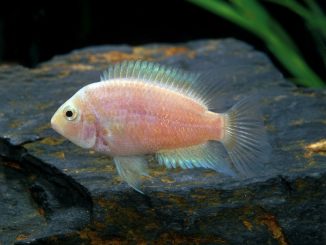
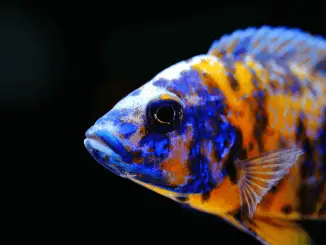
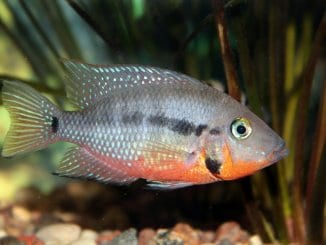
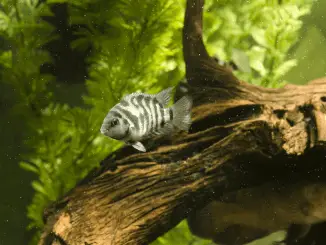
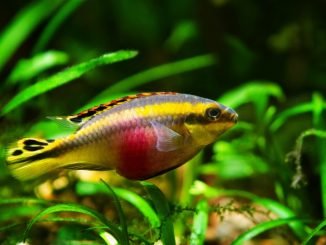
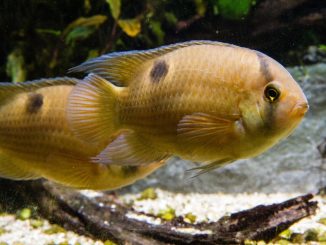
Be the first to comment